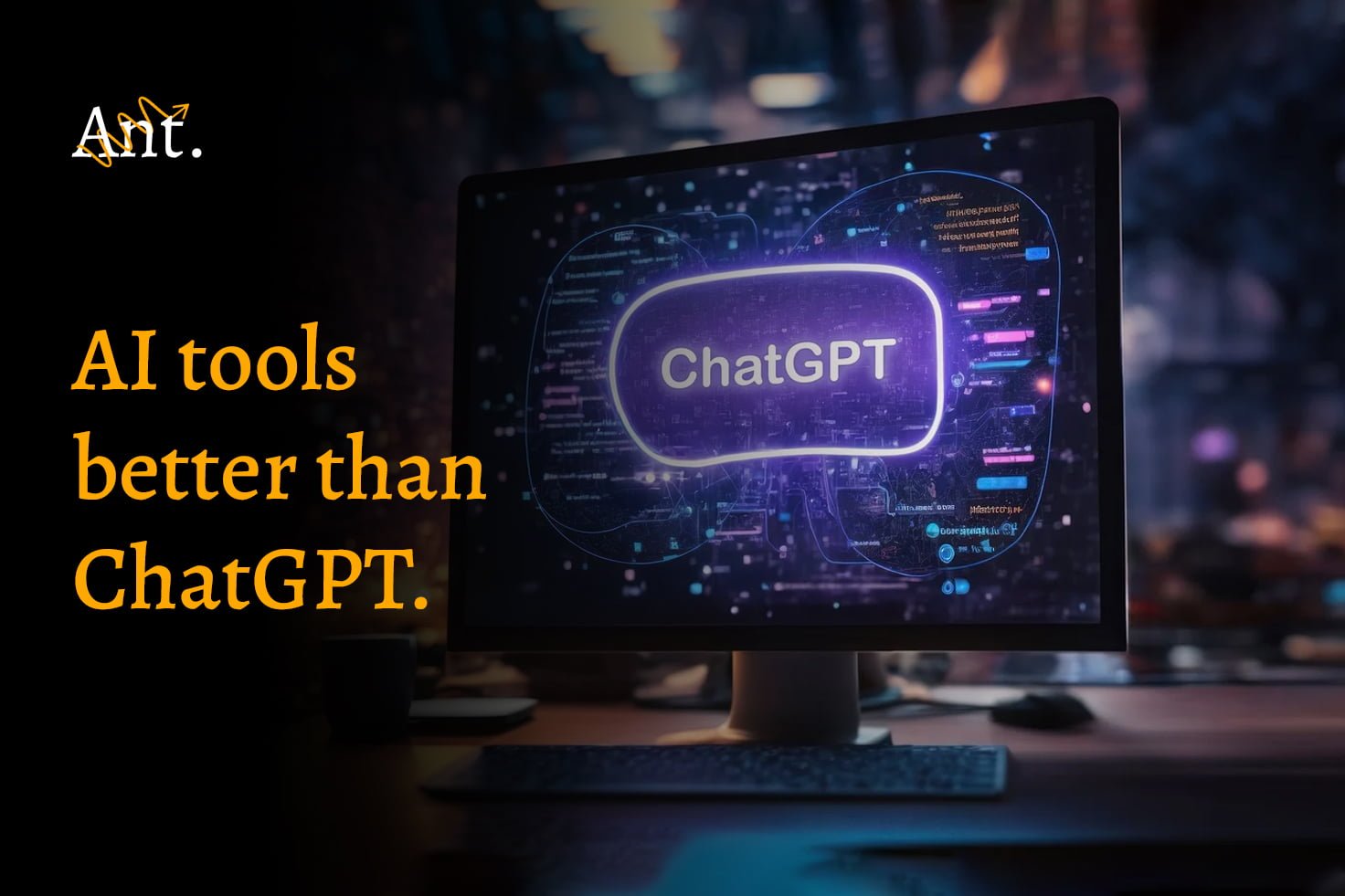Artificial Intelligence has revolutionized various industries, and its tools are the linchpins of this transformation. These tools, armed with capabilities such as Natural Language Processing (NLP), machine learning, and deep learning, have metamorphosed the way we interact with technology.
One such innovation is ChatGPT, an AI model developed by OpenAI. It leverages language modeling to generate human-like text, understanding the context and providing relevant responses.
Fact: A survey by Statista revealed that the AI market size is expected to touch USD 126 billion by 2025, underscoring the growing importance of AI tools.
ChatGPT, despite its innovative approach and widespread use, has certain limitations that other AI models have managed to overcome, leading to a competitive landscape where multiple tools vie for supremacy. This document aims to shed light on these AI tools and provide a comparative analysis.
| AI Tool | Developer | Key Feature |
|---|---|---|
| ChatGPT | OpenAI | Language modeling |
| GPT-3 | OpenAI | Improved language modeling |
| BERT | Deep Bidirectional Transformers | |
| Watson | IBM | Deep QA capabilities |
Stay with us as we delve deeper into these AI tools, their features, limitations, and how they surpass ChatGPT.
Understanding ChatGPT
ChatGPT, a product of OpenAI, has revolutionized the AI landscape with its language modeling capabilities. With the power of machine learning, it can generate natural, human-like text. It comprehends the context of a conversation, allowing for detailed and relevant responses.
Here are a few notable features and limitations of ChatGPT:
- Features:
- Contextual understanding
- Human-like text generation
- Wide range of applications
- Limitations:
- Struggles with ambiguous queries
- Difficulty maintaining a consistent tone over long conversations
According to Emerj, by 2025, the global chatbot market is expected to reach $1.25 billion, with a CAGR of 24.3%. This signifies the potential of AI chat tools like ChatGPT.
“The power of AI is in the hands of the developer. Use it wisely, and you can change the world.”
Fei-Fei Li
In the following sections, we will explore how some AI tools manage to outshine ChatGPT in specific areas, offering enhanced features and capacities.
Top AI Tools Surpassing ChatGPT
In the AI universe, while ChatGPT has proven its worth, there are some other tools that have outperformed it owing to their advanced features and capabilities. The following sections will provide a detailed analysis of such AI tools.
OpenAI’s GPT-3
The third iteration of OpenAI’s Generative Pre-trained Transformer (GPT-3) has managed to surpass ChatGPT with its significantly larger model size and nuanced understanding. It comprises 175 billion machine learning parameters, a monumental leap from its predecessor. It also excels at tasks that require a deep understanding of context, such as translation, and even writing in a style consistent with a given sample.
Here are some notable features and benefits of GPT-3 over ChatGPT:
- Features:
- Improved language modeling
- Better contextual understanding
- Capability to generate longer, coherent, and contextually relevant text
- Benefits over ChatGPT:
- Greater scale and complexity of tasks it can handle
- Enhanced creative writing capability
- Better at maintaining a consistent tone over long conversations
According to OpenAI, GPT-3 has been used in a range of applications from drafting emails to writing Python code.
“GPT-3…We think this is the most impressive version yet of this technology.”
Sam Altman
Google’s BERT
BERT (Bidirectional Encoder Representations from Transformers), developed by Google, is another AI tool that surpasses ChatGPT. Unlike traditional language understanding models, BERT is designed to consider the full context of a word by looking at the words that come before and after it. This bidirectional approach has helped BERT excel in tasks that require a deep understanding of linguistic context.
Key features and advantages of BERT over ChatGPT include:
- Features:
- Deep bidirectional understanding
- Contextual translation
- Use of transformers for generating text
- Advantages of ChatGPT:
- Superior language understanding due to a bidirectional approach
- Better at understanding the intent behind search queries
- Excels at tasks like sentence completion and next sentence prediction
Google has integrated BERT into its search engine, greatly improving the search results’ relevance.
“BERT is the result of Google’s ongoing quest for ways to improve our ability to understand the nuance and context of language.”
Google AI Blog.
IBM’s Watson
IBM’s Watson, renowned for its deep question-answering capabilities, also outperforms ChatGPT. Watson is more than just a chatbot; it’s an AI-powered question-answering machine designed to excel in tasks that require deep contextual understanding.
Features and advantages of Watson over ChatGPT:
- Features:
- Deep QA capabilities
- Contextual understanding
- Evidence-based learning
- Advantages of ChatGPT:
- Superior at answering complex questions
- Better at understanding and learning from structured and unstructured data
- Has more practical applications in industries such as healthcare and customer service
IBM reports that Watson has been implemented across a wide range of sectors, from healthcare to finance, vastly improving decision-making processes.
“Watson is not artificial intelligence, it is augmenting intelligence.”
Ginni Rometty
The Evolution of AI Chat Tools
As we’ve seen, AI chat tools have come a long way, with each iteration bringing improvements in understanding, complexity, and application. But what does the future hold for this groundbreaking technology?
Future Possibilities
Artificial Intelligence is a vast, innovative field, and we can expect to see many significant advancements in AI chat tools in the coming years. Conversational AI, the technology underlying these tools, is predicted to become even more sophisticated. This will lead to more human-like conversation abilities, a better understanding of context, and improved performance in complex tasks.
- Future Predictions:
- More human-like conversations
- Advanced contextual understanding
- Improved performance in complex tasks
“AI is likely to be either the best or worst thing to happen to humanity.”
Stephen Hawking
Implications for Businesses and Consumers
For businesses, these advancements mean more efficient operations, improved customer service, and significant cost savings. A study by IBM shows that businesses can save up to $8 billion annually by 2022 with the use of AI chat tools. However, as with any technology, it will be important to consider the ethical implications of using AI, such as privacy and job displacement concerns.
- Implications for Businesses:
- More efficient operations
- Improved customer service
- Significant cost savings
- Ethical considerations
- Implications for Consumers:
- More instant and precise service
- Personalized interactions
- Privacy concerns
“The rise of AI and the decline of everything else.”
Elon Musk
The Road ahead
To keep up with the rapid advancements in AI chat tools, businesses and developers will need to continually learn and adapt. This involves keeping abreast of the latest technologies, understanding their benefits and limitations, and integrating them into their operations in a way that benefits both the business and the consumer.
- The Road Ahead:
- Continual learning and adaptation
- Understanding of new technologies
- Integration of AI tools into operations
“The future of AI is in the hands of those who use it. Let’s use it responsibly.”
Sundar Pichai
With this, we end our exploration into the world of AI chat tools, their evolution, and their future potential. We hope this journey has been enlightening and prepared you for the exciting advancements to come in the field of artificial intelligence.
How to Choose the Right AI Tool
In the rapidly evolving landscape of AI chat tools, choosing the right tool can be a complex task. There are a few critical factors to take into account when making this decision.
Factors to Consider When Picking an AI Tool
The decision should be driven by your specific needs and the capabilities of the tool. Some key factors to consider include:
- The tool’s ability to understand and generate human-like conversation
- Its performance in handling complex tasks and its learning capabilities
- The quality of support and documentation the tool provides
- The tool’s integration capabilities with your existing systems
- The security measures it offers, especially if it will be handling sensitive data
“Artificial Intelligence is the new electricity”
Andrew Ng
Understanding Technical Requirements
Understanding your business and technical requirements is crucial in choosing the right AI tool. A tool that perfectly suits one business may not be the best fit for another. Key considerations here include:
- The specific tasks you want the tool to perform
- The volume of interactions it can handle
- The level of customization you require
- The technical infrastructure of your organization
- The cost and return on investment
By carefully evaluating these factors, you can ensure that you choose an AI tool that best suits your needs and augments your business processes effectively.
“The key to artificial intelligence has always been the representation.”
Jeff Hawkins
Conclusion
As we wrap up, it’s clear that the landscape of AI chat tools is dynamic, evolving rapidly, and offers incredible potential for businesses and consumers alike. With advancements delivering more human-like conversations and improved comprehension of complex scenarios, there is no doubt that AI is transforming the way we interact with technology. Notably, research indicates that businesses could see cost savings to the tune of $8 billion annually by 2022 through adopting AI chat tools.
But the journey does not end here. The road ahead demands a continuous learning curve and a responsible approach towards integrating AI into our daily operations. It’s also crucial to remember that each organization’s needs are unique, and choosing the right AI tool requires a careful understanding of both business and technical requirements. With AI poised to shape the future, we’re in for an exciting ride. So, let’s buckle up and embrace the possibilities AI chat tools bring to the table!

